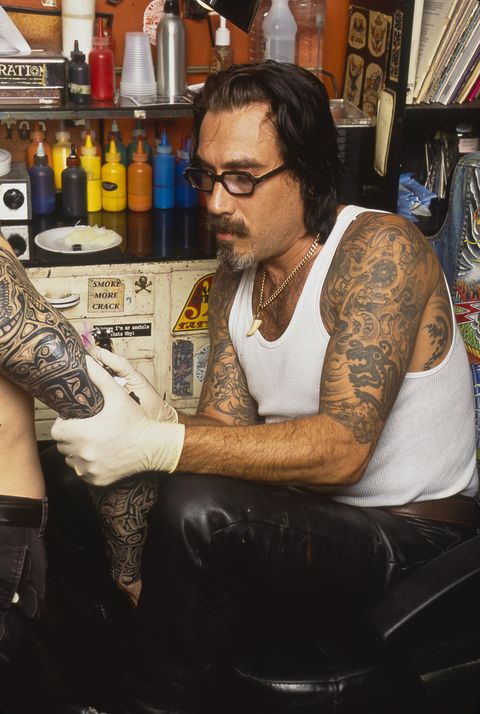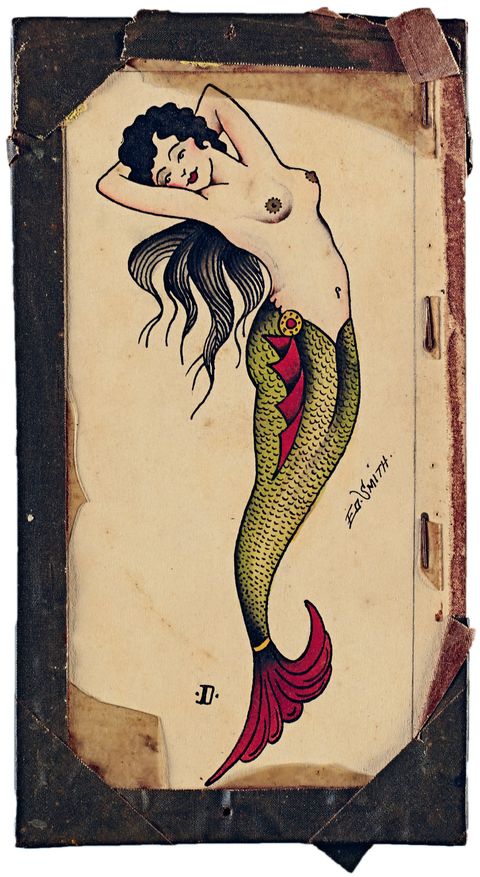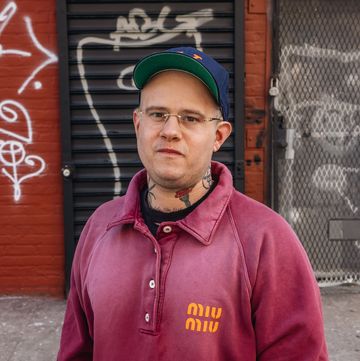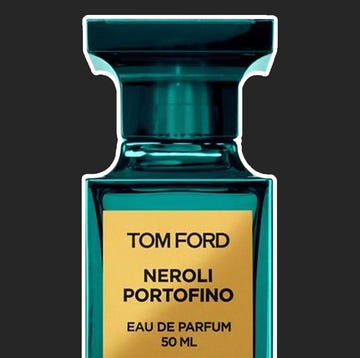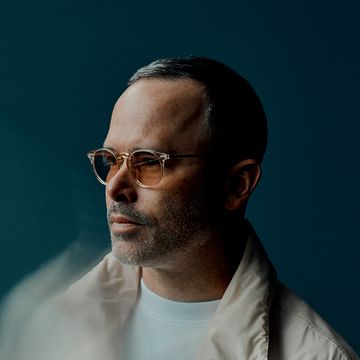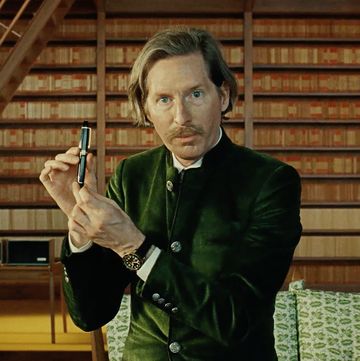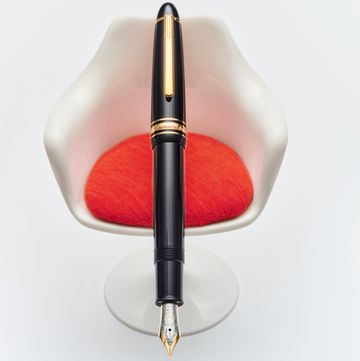It's often said you can read the story of a person's life by the tattoos he wears on his skin. For Jonathan Shaw, there might not be enough to room to cover half of it.
Shaw—whose new book Vintage Tattoo Flash is a collection of 300-plus beautiful, crude, iconic, and forgotten designs from the past century of American tattooing—has been something of a Zelig-like figure in American underground culture for the past forty years. Born in Los Angeles the son of a big-band jazz artist and a Hollywood actress, he once came to blows with Bukowski, has been called "the great nightmare antihero of the new age" by Iggy Pop in reference to his novel Narcisa, and tangled with or tattooed (at one point or another) the likes of Frank Zappa, Jim Morrison, The Manson Family, and Johnny Depp, who boasts several of his pieces (as do David Lee Roth, Marilyn Manson, Naomi Campbell, and Kate Moss—to name a few). And that's before we get to the heroin addiction, the years working on ships in Central and South America, founding one of the first serious tattoo publications back in the '80s (International Tattoo Art), and opening Fun City, New York's first legal(ish) tattoo parlor.
Along the way Shaw has amassed a stunning collection of flash, the term for the hand-drawn tattoos you see on the walls of tattoo shops, stretching from the Bowery in the 1900s and throughout the rest of the century. His collection includes pieces from masters like Zeke Owen, Tex Rowe, Ted Inman, Ed Smith, and Paul Rogers, as well as others whose names have been lost to history.
The images in the book, much like the bodies of those whose skin they adorned, read like a history of the cultural concerns of the time—from early nautical and military themes of patriotism and seafaring to the popular cartoon characters of a given era and our ever-shifting views on death, birth, and sex.
I called Shaw to talk about his history in the tattoo world, and how he came across so many treasures.
Esquire.com: When did you first fall into he world of tattooing?
Jonathan Shaw: I got into tattooing back in the mid-'70s, which, compared to the tattoo world as it is today, it might as well have been the 1870s, that's how much it's changed in such a short period of time. I was what you'd call sort of the second generation of tattoo artists—there is basically modern tattooing as we know it today, and tattooing before that. I was kind of the generation that was the bridge between these two worlds. In that capacity I was very instrumental in not only seeing all that happen, but making a lot of it happen. I was the managing editor of the first big tattoo magazine—International Tattoo Art—and I was running around the world researching tattoo history, and interviewing the old-timers, and really documenting a lot of stuff that had previously gone undocumented and putting it into a context where it could be enjoyed by the general public.
What was it about tattoos, what was the spark?
I was already interested in drawing since I was a little kid. At one point I sort of dreamed of being a comic book artist. One thing lead to another, and I wound up leaving home at a very early age, and traveling around the country, and eventually hoboing around Mexico and Central America. Then I ended up getting work on a ship and living a lifestyle that brought me into close contact with a lot of tattooing. Back in those days in the mid-'70s there really wasn't a tattoo culture like there is today, where it's accessible and you walk down the street of any town and you see tattoo parlors and people sporting a lot of tattoos. It's kind of turned into this very acceptable, mainstream, kind of boring thing. It's become like a cliché, the tattoo. But back in the '70s it wasn't that at all. It was something edgy, underworld, kind of dangerous, mysterious, and weird. The average person would not come into a lot of contact with tattooing.
And how did that lead to learning to tattoo?
So I was working on ships, around sailors, and I was in a lifestyle where tattooing was part of the cultural currency. Third world, blue-collar lifestyle. Honestly I got into tattooing more through the lifestyle than I did through the art. My artistic interest sort of came later, but I was attracted to it through the lifestyle and what a tattoo represented. At some point I was getting tattooed by some old salt in Panama, watching all the fancy electronic equipment, seeing colors, people getting tattooed—the guy, really, he wasn't a great draftsmen, and I said to myself, "Shit, I can do this. But how am I going to learn?" Back then there was no way to learn. There was a very closed community: If you walked into a tattoo shop and said, "I want to learn tattooing," they'd probably chase you out with a baseball bat. Old-timers were close-mouthed about their trade secrets. It was almost as if they could see what would happen in the future if…You had guys back then, guys who were functionally illiterate, could barely read or write, and were driving around in brand new Cadillacs, wearing gold watches and diamond rings. They were making a lot of money tattooing. Some of them were good, some of them weren't very good, but they knew how to tattoo. They kept that to themselves. If somebody tried to open a tattoo shop in the same city as one of these guys they might've thrown a firebomb through the window. It wasn't easy to break in. I had to experiment on my own, making my own equipment. And once I'd become somewhat proficient enough to have an idea of what I was doing, one thing lead to another, and through a fortuitous confluence of circumstances, I was accepted by one of the old-time tattoo masters, and he took me under his wing and let me into the game, gave me a formal apprenticeship. When he passed on I went off on my own and traveled the world as an itinerant tattoo artist.
When was the shift where tattooing entered the mainstream?
Somewhere around the mid-1980s tattooing started to become a little fashionable. Up until then it was like sailors and bikers and criminals and blue-collar workers. There was a lot of tattooing going on, but it wasn't visible to mainstream society. A new subcultural group started getting interested in tattooing, and that was rock and roll musicians. Guys like Guns N' Roses and Mötley Crüe and the Red Hot Chili Peppers. That was around the time MTV became a viable source of culture. Suddenly people are seeing tattoos on these bad-boy rockers, and from there it kind of snowballed.
When did you start collecting flash?
[After] I was in close contact with that world, I was hanging out with these old guys, sometimes tattooing with them, so I became intimate with a lot of these old-school tattoo guys. At the time they were, well, they were alive back then. Most of them are not now. I got to get up close and personal with these people, and it was an organic thing. It was just part of the scenery. This old kind of tattoo flash was a lot more commonplace in the tattoo world than it is now. You saw it in tattoo shops. New iconography started being introduced into the mix by newer tattoos artist in the '70s when I came into it. People with art-school backgrounds sometimes, people with different cultural references. The stuff that's in my book, the stuff that was meat and potatoes for the old tattoos artists, was becoming passé. A lot of it was on its way to the garbage bin by the time I started acquiring it. A lot of it was given to me, or sold really cheap. These old guys couldn't get their heads around why someone would want this stuff: It was obsolete. If a design isn't selling, if it isn't popular, to them, it's basically worthless. They can't sell it, because nobody's going to want some old World War I sailing ship tattoo design when everybody else is looking at MTV and seeing Mötley Crüe has tattoos of flaming guitars or whatever they're getting. Tattooing has always been a popular art form, and as such, it reflects that current zeitgeist, what's on people's minds.
So prior to that the common themes tended to be nautical, mermaids, dragons, and stuff? How long did that persist?
That stuff is still in the iconography of tattooing. These things will always be popular, but new styles were being introduced. They wanted to keep their stuff ahead of the competition, there were lots of reasons, but the old tattoo flash they started taking it off the walls. In recent years there's been a huge resurgence in interest in the old-time stuff. It's kind of like how in the '90s rockabilly became a big thing. Kids in their 20s who weren't even alive when Elvis died were walking around imitating Elvis. In the tattoo world it's the same thing. In recent years there's been a big resurgence of interest in…
Sailor Jerry and so on?
Yeah, now people are kind of going back to the roots, because they've done all the biomechanical flaming dragons with rockets flying out of their ass, and interacting with Bart Simpson, or whatever. They've done all that. A lot of that stuff just might not stand the test of time! A lot of people are feeling this sort of nostalgic longing for the tried-and-true designs.
What do you think it is that makes tattoos feel so special? Is it the ephemeral nature, knowing that they're artwork that isn't meant to last forever?
Yeah. That's the kind of draw or mystique around the thing that's pretty hard to verbalize. It's a primal thing, a primal art form. It's arguably one of the oldest art forms that was ever really practiced by ancient man. There's archaeological evidence showing that tattooing was being practiced, rather proficiently, before Christ. They found that mummified iceman, a glacier melted and they found a perfectly preserved ancient human being. They did tests on him, and he'd been preserved for thousands of years. He was covered in tattoos. It probably goes back as far as cave painting. It's something that's kind of wired into our DNA as a species, and the fact that it's decorating the first possession that any human being ever acquires—his hide, his skin, his body—it makes it a very primal concept. It's like music. Where did music come from? Some guy throwing a rock against a tree, then picking up the rock and hitting it three times in quick succession, and boom: You've got drumming, rhythm. Some cave man probably burned himself with a charred ember, and saw that the carbon from that carbonized piece of wood stayed under the skin and left a mark. Maybe that was when they decided to start tattooing. Maybe they took some wood, burned it into charcoal, made it into ink, and started cutting it into their flesh. There are actually references in the Old Testament to tattooing. It's not like going to the museum and looking at a painting on the wall. Children just really gravitate to tattoos for whatever reason. Maybe because they're close to man in his primitive state, but they're always poking at your tattoos.

